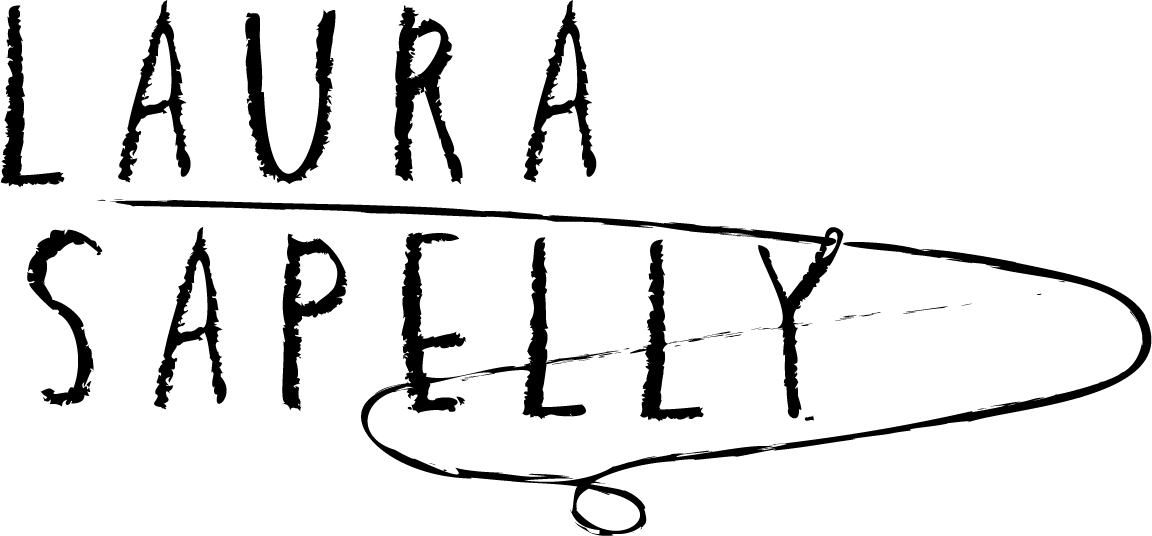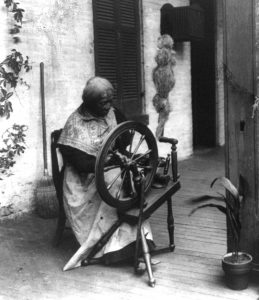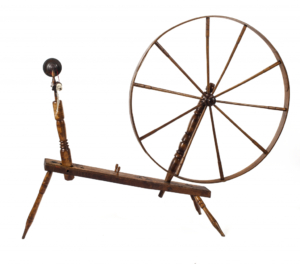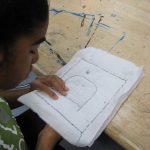Here’s my “muslin part 2” story–What’s yours?
Although I earned my MFA- Master of fine arts- within a traditional textile program- (particularly the undergrad program)— that focused on weaving and dyeing cloth,
I’d never seen a loom until I entered the studios of Umass Dartmouth in August 2001.
Machine-stitching was and IS my vibe.
The raucous clackety-clack of the weaving room startled the heck out of me.
If handlooms were this loud, I couldn’t IMAGINE how loud machine looms were-
especially when my maternal grandmother and her siblings worked as child laborers,
overseeing the looms in a Fall River textile mill.
No wonder they all went deaf!
After graduation, I served as an assistant weaver to the talented, Concord, MA-based fiber artist, Barbara Willis.
Though I never set up the warp (the vertical yarns on the loom), I worked the weft.
I learned about weave structure and the definition of plain cloth fabric: the warp and weft were equal parts up and down.
Barbara’s sublime scarves defied gravity: her “floating” warp/wefts freed the rich purple chenilles
mixed with sparkly golds to ultimate advantage.
Her fibers emerged, popped out of the weave, not buried under a more democratic
yet less attractive plain weave for the fibers and aesthetic she was after.
Yet, so much cloth IS plain cloth – the simple over and under design.
In this episode, we talk about muslin, and perhaps more accurately, plain cloth, and its dizzying, contradictory history in the N. American colonies—and in the post-Revolution United States.
What is YOUR muslin or plain cloth story?
Share on our Facebook page or in our private FB group, Storied Sewing Circle ( >>join here!)
What’s this episode really about?
We get into some serious stories concerning the paradox of plain cloth in the United States.
First, we’ll start with a review on the function of a colony- and how it went down in British North America
Then, we will discuss family life in pre-industrial New England on the eve of the revolution –
And how ministers got in the mix and motivated women and girls to become a part of the colony’s boycott of British goods in the name of “Liberty.”
We will explore the definition of Liberty held dear by certain people —and clothing made of plain cloth as a symbol of Independence – depending on what body wore it.
Finally, we will examine a textile manufacturer in post-revolutionary Rhode Island –
who embodied the unreal contradictions of freedom and enslavement and ultimately power, profit, and control that still motivates so many people and businesses in this country.
After listening to this episode, you’ll be more informed as to the connections between:
- cloth and gender,
- production and race that shaped
- and continue to shape deep-seated values lurking in the United States.
Join us for this podcast, and learn about muslin/plain cloth’s fractured history in the United States!!
Hey hey! References for educators and….. nerds!
Want more juicy info? Check out the refs below! Indulge in your LOVE of all things “stitch!”
https://www.mesdajournal.org/2012/slave-cloth-clothing-slaves-craftsmanship-commerce-industry/
Mandell, H. (2019). Crafting dissent: Handicraft as protest from the american revolution to the pussyhats. Rowman & Littlefield. Get it >>> here
[This post may contain referral-affiliate links. If a purchase is made, I may receive a small commission at no extra cost to you.]



